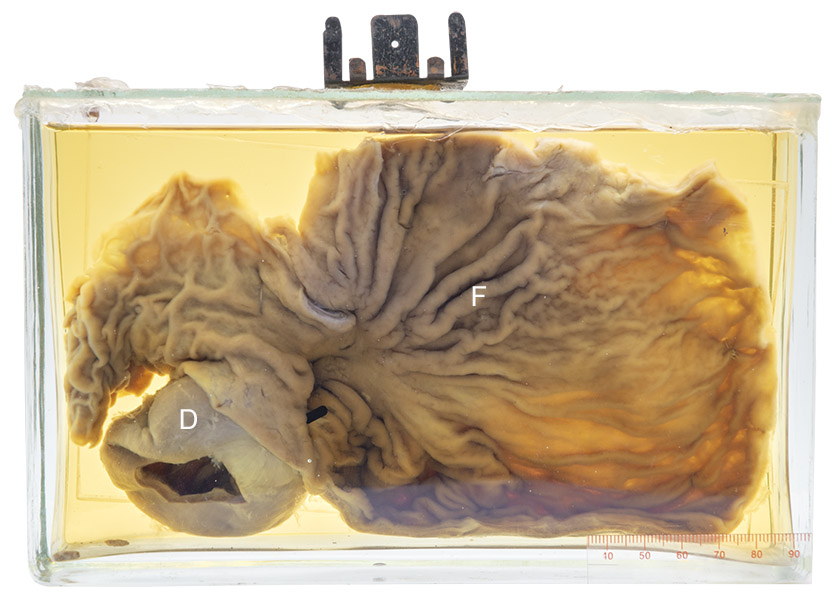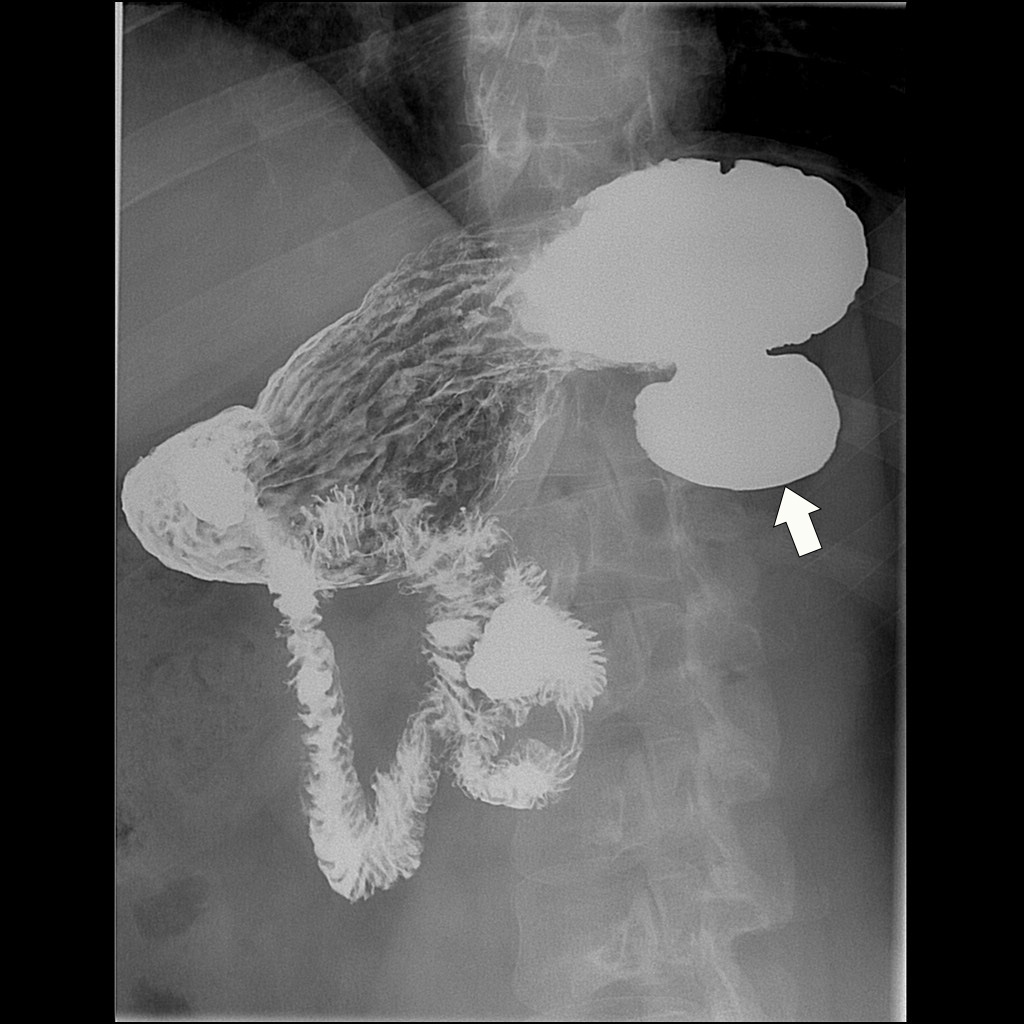

Age/sex: unknown
Size: 13.2 x 21.0 x 6.9 cm
The opened stomach shows many mucosal rugal folds (F), a normal anatomic feature allowing the stomach to expand as it fills with food or drink. A 5 cm pouch (diverticulum, D) can be seen near the antrum.
Gastric diverticula
Gastric diverticula are uncommon. Some are congenital, most likely developing through a localized deficiency of smooth muscle in the stomach wall. Others are acquired in adult life by traction of a portion of the stomach wall by scar tissue formed as a result of cholecystitis or pancreatitis.
Most gastric diverticula are asymptomatic. Occasionally, an individual complains of epigastric discomfort or frank pain. Rarely, there are more significant complications, such as ulceration with hemorrhage or perforation. Wide necked diverticula are believed less likely to cause symptoms because food can easily enter and leave them. Those with a small opening, such as the one in this specimen, are more likely to be associated with retention of food after normal gastric emptying and thus with symptoms.
Below: A radiograph showing a large gastric diverticulum (arrow) on a barium study.
Source: Bickle, I. (2020). Gastric diverticulum. Radiopaedia. https://radiopaedia.org/cases/gastric-diverticulum-12
